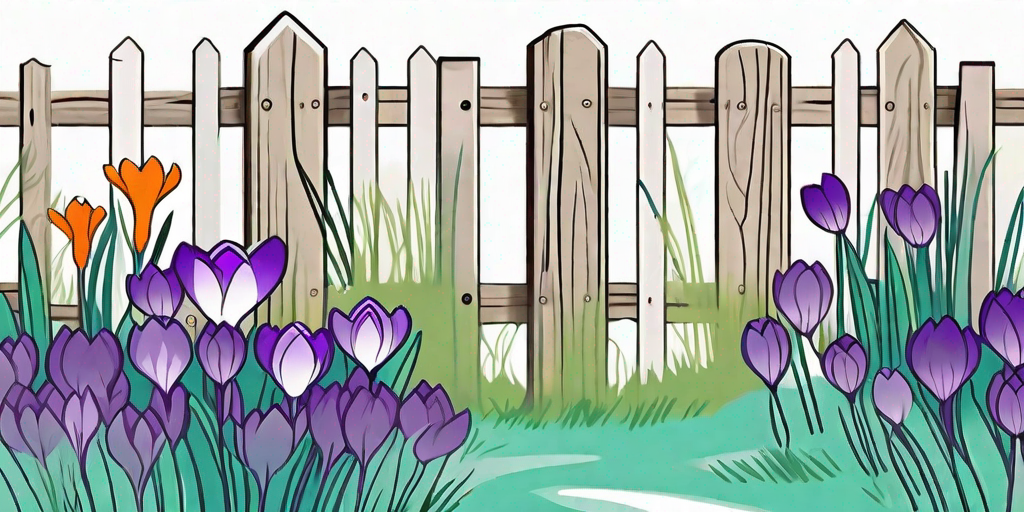
Spring has sprung and it's time to get your hands dirty! If you're looking to transform your backyard into a vibrant, colorful paradise, then creating a crocus lawn might just be the ticket. These beautiful, early-blooming flowers are a sight for sore eyes after a long, dreary winter. So, let's get down to the nitty-gritty of how to create a stunning crocus lawn in your backyard.
Understanding the Crocus
Before we dive into the 'how-to', let's take a moment to appreciate the crocus. These hardy little flowers are some of the first to bloom in the spring, often pushing through the snow to provide a much-needed splash of color. There are over 80 species of crocus, so you're sure to find one that suits your aesthetic and climate.
Most crocus species are native to Europe, Asia, and Africa, and they're known for their vibrant colors, which range from white and yellow to shades of purple. They're also known for their resilience. These flowers are like the Rocky Balboa of the plant world - they can take a hit and keep on blooming.
Choosing the Right Crocus for Your Lawn
With so many species of crocus to choose from, picking the right one for your lawn can feel a bit like being a kid in a candy store. But don't worry, we've got you covered. Here are a few things to consider when choosing your crocus:
- Climate: Some crocus species are better suited to certain climates than others. Make sure to choose a species that can thrive in your local weather conditions.
- Color: Crocuses come in a variety of colors. Choose a color that complements the other plants in your garden, or go wild and create a rainbow crocus lawn. The world is your oyster!
- Size: Crocuses range in size from small, delicate flowers to larger, more robust blooms. Consider the size of your lawn and the look you're going for when choosing your crocus.
Creating Your Crocus Lawn
Now that we've got the basics covered, it's time to roll up your sleeves and get to work. Creating a crocus lawn is a labor of love, but the results are well worth the effort. Here's a step-by-step guide to get you started:
Step 1: Prepare Your Lawn
The first step in creating your crocus lawn is to prepare the area. This involves removing any existing grass or weeds and tilling the soil. This might sound like a lot of work, but think of it as a great way to get some exercise and enjoy the great outdoors.
Once the area is cleared, it's time to enrich the soil. Crocuses aren't too picky about soil conditions, but they do prefer well-drained soil. Adding compost or well-rotted manure can help improve soil structure and provide essential nutrients.
Step 2: Plant Your Crocus Bulbs
Once your lawn is prepared, it's time to plant your crocus bulbs. This is where the magic happens! Plant the bulbs about 3 inches deep and 2 to 4 inches apart. Make sure to plant them with the pointy end up - this is where the flower will emerge.
Planting crocus bulbs can be a fun family activity. Get the kids involved and turn it into a game. Who can plant the most bulbs? Who can find the biggest bulb? The possibilities for fun are endless!
Step 3: Water and Wait
After planting your bulbs, give them a good watering. Then, all that's left to do is wait. It might seem like nothing is happening for a while, but don't worry. Your crocus bulbs are busy underground, getting ready to burst into bloom come spring.
While you're waiting, why not take up a new hobby? Knitting, bird watching, interpretive dance - the world is your oyster!
Maintaining Your Crocus Lawn
Once your crocus lawn is in full bloom, you'll want to keep it looking its best. Here are some tips for maintaining your crocus lawn:
Watering and Fertilizing
Crocuses are pretty low maintenance, but they do appreciate a little TLC. Keep the soil moist, but not waterlogged. A light watering once a week should do the trick.
As for fertilizing, a light application of a balanced fertilizer in the fall can help promote healthy blooms. But be careful not to overdo it - too much fertilizer can do more harm than good.
Dealing with Pests
Like any garden, your crocus lawn may attract unwanted visitors. Squirrels, rabbits, and deer are particularly fond of crocus bulbs. If these critters are a problem in your area, consider using a repellent or fencing to protect your lawn.
On the plus side, crocuses are resistant to most common garden pests, so you won't have to worry about aphids, slugs, or snails.
FAQs
When is the best time to plant crocus bulbs?
The best time to plant crocus bulbs is in the fall, before the first frost. This gives the bulbs time to establish roots before the winter.
Can I grow crocuses in pots?
Absolutely! Crocuses are great for container gardening. Just make sure to use a pot with good drainage to prevent waterlogging.
Do crocuses come back every year?
Yes, crocuses are perennials, which means they come back year after year. In fact, they often multiply, so you can look forward to even more blooms each spring!
Conclusion
Creating a crocus lawn in your backyard is a fun and rewarding project. With a little planning and preparation, you can transform your lawn into a colorful springtime paradise. So why wait? Spring into action and start planning your crocus lawn today!















